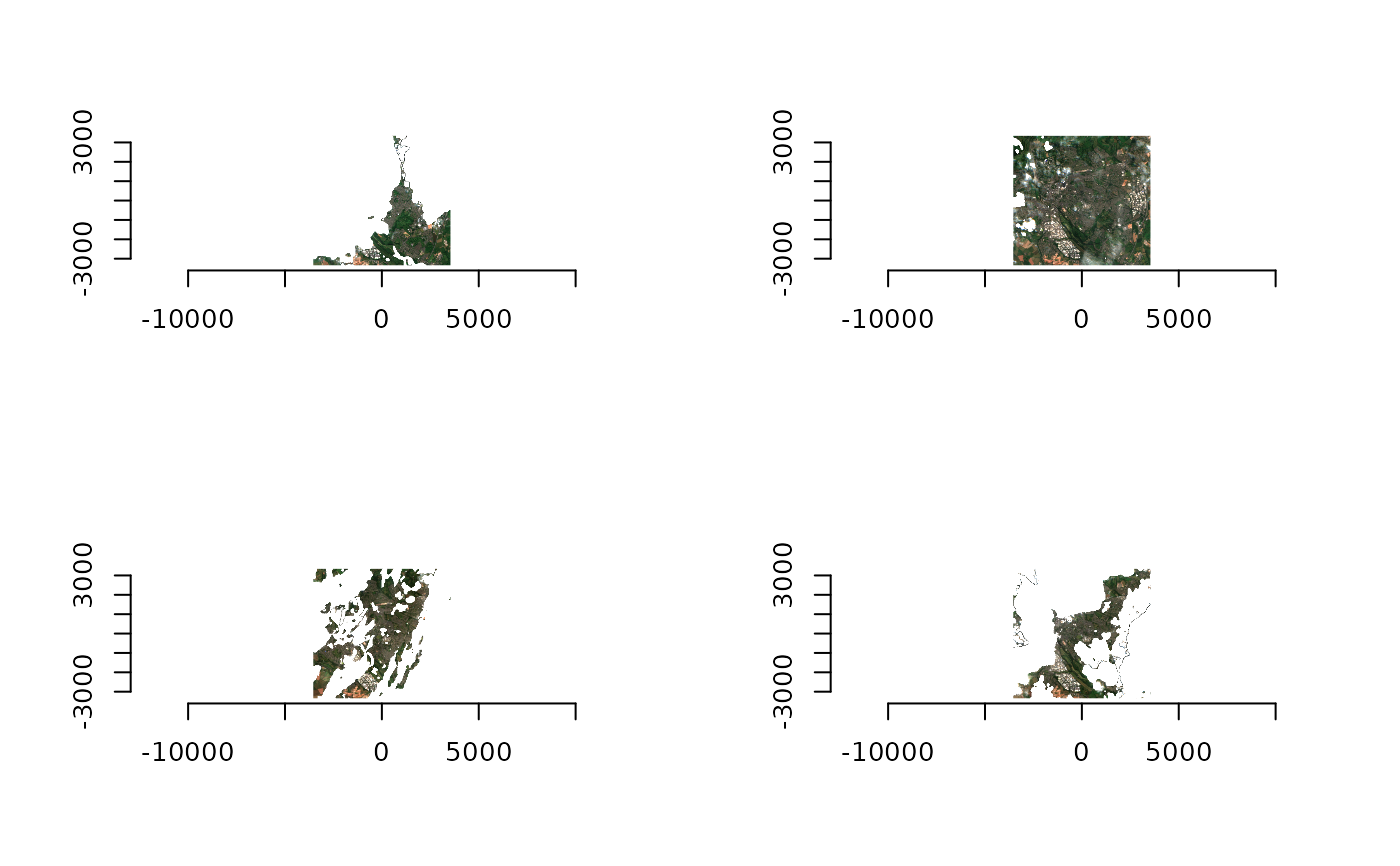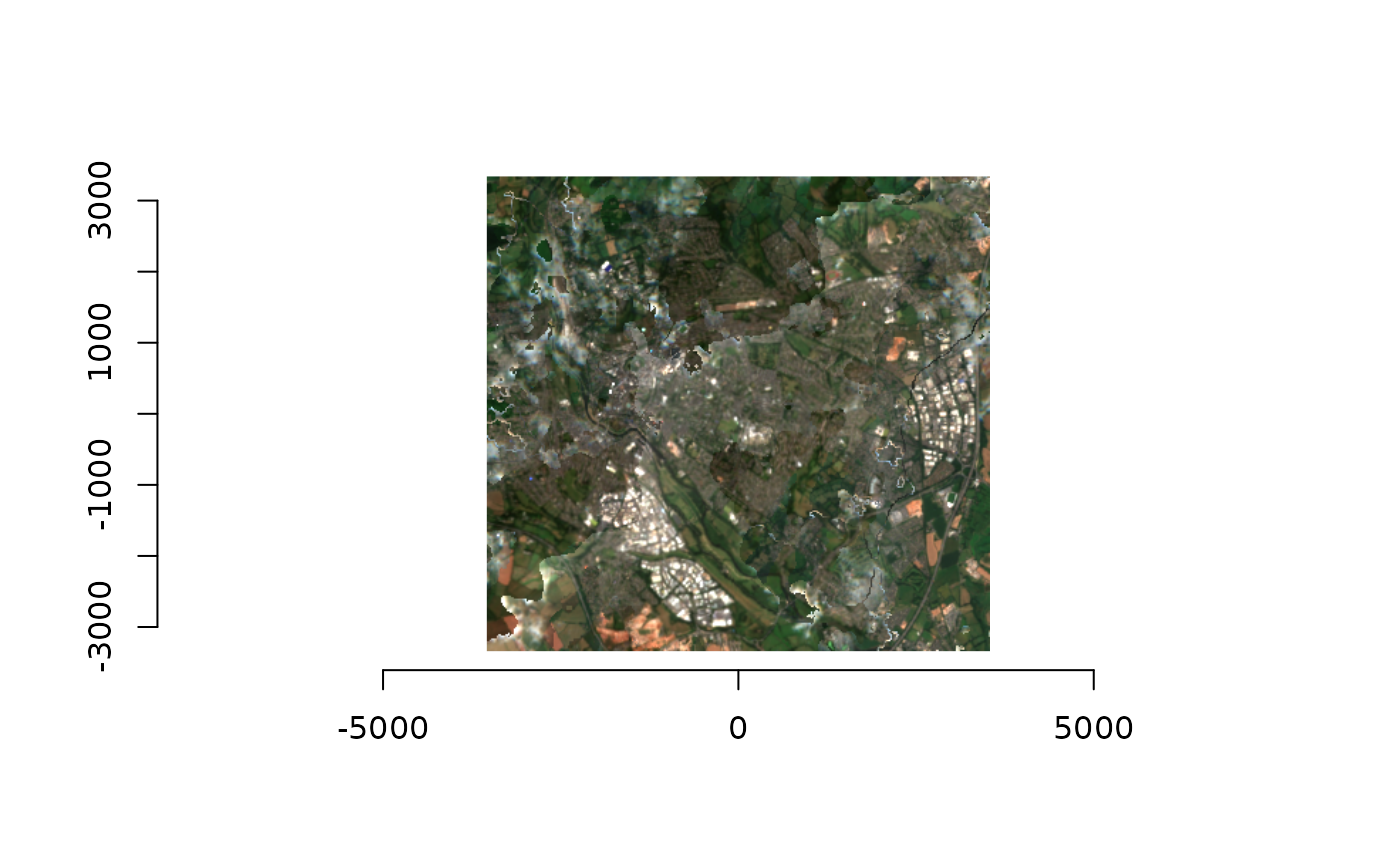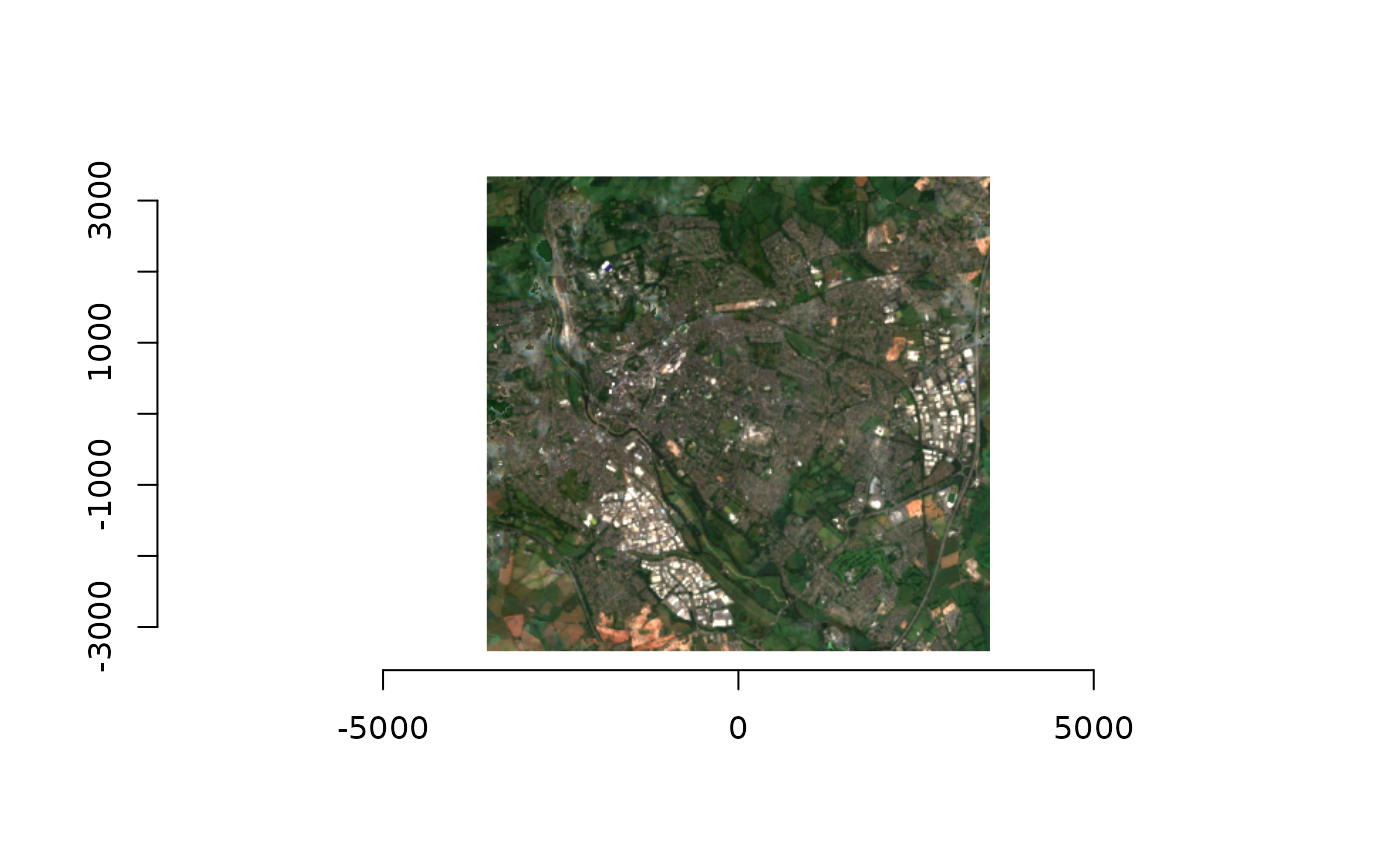Generate a composite raster from (virtual) raster sources.
Usage
vrt_compute(
x,
outfile = fs::file_temp(ext = "tif"),
t_srs,
te,
tr,
resampling,
engine,
warp_options,
creation_options,
config_options,
nsplits,
add_cl_arg,
quiet,
apply_scale,
dst_nodata,
recollect
)
# S3 method for class 'vrt_block'
vrt_compute(
x,
outfile = fs::file_temp(ext = "tif"),
t_srs = x$srs,
te = x$bbox,
tr = x$res,
resampling = c("near", "bilinear", "cubic", "cubicspline", "lanczos", "average", "rms",
"mode", "max", "min", "med", "q1", "q3", "sum"),
engine = c("warp", "gdalraster", "translate"),
warp_options = gdalwarp_options(),
creation_options = gdal_creation_options(),
config_options = gdal_config_options(),
nsplits = NULL,
add_cl_arg = NULL,
quiet = TRUE,
apply_scale = TRUE,
dst_nodata = NULL,
recollect = FALSE
)
# S3 method for class 'vrt_stack_warped'
vrt_compute(
x,
outfile = fs::file_temp(ext = "tif"),
t_srs = x$srs,
te = x$bbox,
tr = x$res,
resampling = c("near", "bilinear", "cubic", "cubicspline", "lanczos", "average", "rms",
"mode", "max", "min", "med", "q1", "q3", "sum"),
engine = c("warp", "gdalraster", "translate"),
warp_options = gdalwarp_options(),
creation_options = gdal_creation_options(),
config_options = gdal_config_options(),
nsplits = NULL,
add_cl_arg = NULL,
quiet = TRUE,
apply_scale = TRUE,
dst_nodata = NULL,
recollect = FALSE
)
# S3 method for class 'vrt_stack'
vrt_compute(
x,
outfile = fs::file_temp(ext = "tif"),
t_srs,
te,
tr,
resampling = c("near", "bilinear", "cubic", "cubicspline", "lanczos", "average", "rms",
"mode", "max", "min", "med", "q1", "q3", "sum"),
engine = c("warp", "gdalraster", "translate"),
warp_options = gdalwarp_options(),
creation_options = gdal_creation_options(),
config_options = gdal_config_options(),
nsplits = NULL,
add_cl_arg = NULL,
quiet = TRUE,
apply_scale = TRUE,
dst_nodata = NULL,
recollect = FALSE
)
# S3 method for class 'vrt_collection_warped'
vrt_compute(
x,
outfile = fs::file_temp(ext = "tif"),
t_srs = x$srs,
te = x$bbox,
tr = x$res,
resampling = c("near", "bilinear", "cubic", "cubicspline", "lanczos", "average", "rms",
"mode", "max", "min", "med", "q1", "q3", "sum"),
engine = c("warp", "gdalraster", "translate"),
warp_options = gdalwarp_options(),
creation_options = gdal_creation_options(),
config_options = gdal_config_options(),
nsplits = NULL,
add_cl_arg = NULL,
quiet = TRUE,
apply_scale = TRUE,
dst_nodata = NULL,
recollect = FALSE
)
# S3 method for class 'vrt_collection'
vrt_compute(
x,
outfile = fs::file_temp(ext = "tif"),
t_srs,
te,
tr,
resampling = c("near", "bilinear", "cubic", "cubicspline", "lanczos", "average", "rms",
"mode", "max", "min", "med", "q1", "q3", "sum"),
engine = c("warp", "gdalraster", "translate"),
warp_options = gdalwarp_options(),
creation_options = gdal_creation_options(),
config_options = gdal_config_options(),
nsplits = NULL,
add_cl_arg = NULL,
quiet = TRUE,
apply_scale = TRUE,
dst_nodata = NULL,
recollect = FALSE
)Arguments
- x
A vrt_block, vrt_stack, or vrt_collection object
- outfile
A character string of the output file path
- t_srs
A character string of the target SRS
- te
A numeric vector of the target extent in the form c(xmin, ymin, xmax, ymax) and must be the same SRS as in
t_srs.- tr
A numeric vector of the target resolution in the form c(xres, yres)
- resampling
A character vector of the resampling method to be used. see details.
- engine
A character vector of the engine to use for processing the raster data. See details.
- warp_options
A character vector of options to pass to gdalwarp
- creation_options
A character vector of options to pass to the the gdal "engine".
- config_options
A character vector of options to set in the GDAL environment
- nsplits
An integer of the number of splits to use when using the gdalraster engine.
- add_cl_arg
A character vector of additional command line arguments that are not captured in
gdalwarp_options()- these are not checked for validity.- quiet
A logical indicating whether to suppress output
- apply_scale
A logical indicating whether to apply scale values existing the in file metadata.
- dst_nodata
A numeric value of the nodata value to use for the output raster. If NULL, gdal will decide. This is usually only required if you are retaining a band which contains a different nodata value to others.
- recollect
A logical indicating whether to return the output as a vrt_block or vrt_collection object. default is FALSE and the output is a character string of the output file path.
Value
A character string of the path to the output raster or, if recollect is TRUE, a vrt_block or vrt_collection object.
Details
The resampling default is "near", which should be chosen in vrt_warp has
already been used but "bilinear" may be prefereable where the input data is
has not yet been virtually aligned/resampled.
The choice of engine will depend on the nature of the computation being
carried out. In the majority of cases warping is preferred, especically when
we are not processing the entirity of the input dataset (as is usually the
case when working with online data sources).
Examples
s2files <- fs::dir_ls(system.file("s2-data", package = "vrtility"))
ex_collect <- vrt_collect(s2files)
t_block <- ex_collect[[1]][[1]]
# export each file with mask.
coll_masked <- ex_collect |>
vrt_set_maskfun(
mask_band = "SCL",
mask_values = c(0, 1, 2, 3, 8, 9, 10, 11)
) |>
vrt_warp(
t_srs = t_block$srs,
te = t_block$bbox,
tr = t_block$res
)
# save each file with masked values.
masked_files <- vrt_compute(
coll_masked,
outfile = fs::file_temp(ext = "tif")
)
withr::with_par(
list(mfrow = c(2, 2)),
purrr::walk(
masked_files[2:5],
~ plot_raster_src(.x, bands = c(3, 2, 1))
)
)
 basic_mosaic <-
vrt_stack(coll_masked) |>
vrt_compute(
outfile = fs::file_temp(ext = "tif")
)
# images laid one on top of the other
plot_raster_src(
basic_mosaic,
c(3, 2, 1)
)
basic_mosaic <-
vrt_stack(coll_masked) |>
vrt_compute(
outfile = fs::file_temp(ext = "tif")
)
# images laid one on top of the other
plot_raster_src(
basic_mosaic,
c(3, 2, 1)
)
 # now median composite with pixelfunction
med_composite <-
vrt_stack(coll_masked) |>
vrt_set_py_pixelfun(pixfun = median_numpy()) |>
vrt_compute(
outfile = fs::file_temp(ext = "tif")
)
plot_raster_src(
med_composite,
c(3, 2, 1)
)
# now median composite with pixelfunction
med_composite <-
vrt_stack(coll_masked) |>
vrt_set_py_pixelfun(pixfun = median_numpy()) |>
vrt_compute(
outfile = fs::file_temp(ext = "tif")
)
plot_raster_src(
med_composite,
c(3, 2, 1)
)
